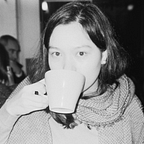Four Tips For Doing UX Research
What makes a product truly stand out is whether or not it solves an existing problem. How can we know what the problem really is or what users really need without doing the research first? Navigating the problem space can be overwhelming, but I think that the research phase is the most exciting part of the design process.
Here are a few things I always keep in mind.
1. Be as neutral as possible.
It goes without saying that preparing for the interviews is essential. Although interviews are a great way to learn from the user, the structure of interviews creates a power dynamic between the interviewer and interviewee. If we conduct interviews from a neutral standpoint, then we’ll be able to reduce any bias that could naturally come about. Instead of asking the user about their preferences, it’s probably much better to ask more focused (yet broad) questions that empower the user to share their motivations and frustrations. What they like or dislike about the product could change over time, but their motivations won’t.
For instance, consider these two questions: Why do you like using this product? and What is your experience like using this product?
The first question already assumes that the user really goes like using the product! Compared to the first question, the second question gives the user space to think about their experiences using the product. The answers we’ll get will be much more insightful than the laundry list of likes and dislikes we’ll get from the first question.
2. Don’t doubt the power of a follow up question.
A while back, I conducted interviews with potential customers for a start-up that wanted to create a subscription box service for FMCG. While I did prepare questions, sticking to the script alone is also limiting the kind of insights you can get from the users. Circling back to previous answers, checking in on my understanding by reiterating their stories, and simply asking why? helped uncover their true motivations. I also find that the dynamic becomes a bit more relaxed when I do ask follow up questions. Although it is an interview, I find that follow up questions make the interview feel more conversational, which in turn makes me more empathetic to the user.
3. Insight statements are your best friends.
There is a lot of qualitative and quantitative data to sift through. Taking the time to sit, read, and understand all of it is always worthwhile in the long run. To keep track of overlapping thoughts, I first cluster them into groups, then synthesize the content of each group into 1–3 insight statements. In this case, insight statements are clear and concise sentences that highlight the main ideas and demonstrate our understanding of the user. Compiling these statements makes it much easier to keep focus on the most important things that need to be addressed.
When I’m creating personas, I always refer back to my insight statements from interviews. Creating personas might have been a little more challenging if I hadn’t synthesized my data in the first place. These statements serve as reminders of who the user is and what the user really needs.
4. Expect your research plan to change.
For one of my projects, I wanted to build a learning management system for high school and college students. When I started writing job stories, I quickly realized that I needed to see how students currently use their schools’ respective learning management systems. Since I had focused more on the interviews, contextual inquiries weren’t originally part of the plan. Yet, setting aside 30 minutes to do a contextual inquiry gave me a better sense of what kinds of features these students really need.
There is always more to learn about the user. As the project continues to change, the research methods will too.
Throughout this exploratory stage, I constantly wonder, how might we create more useful and meaningful products? What is working for them? What do they really need? And of course, why? As I dive deeper into my research, my answers to these questions become more focused. In addition to the problem statement, referring back to these fundamental questions not only helps reaffirm what I understand but also highlights what I have yet to understand about the user.
What are your tips for doing UX research?
